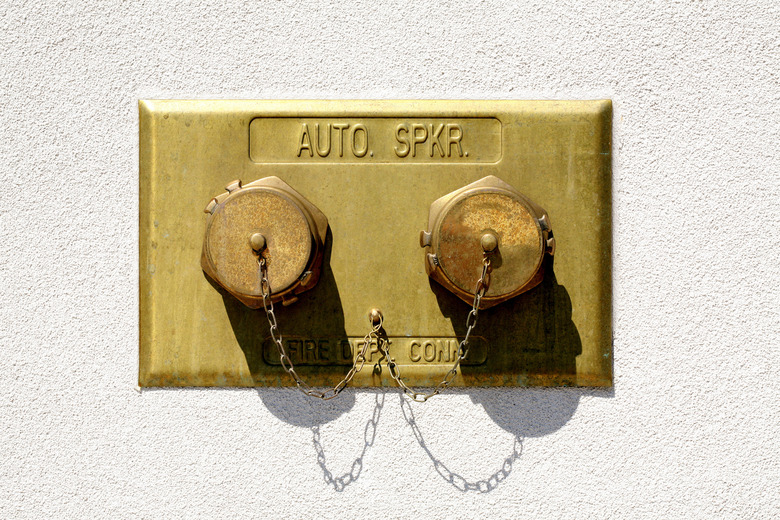How To Insulate Your Sprinkler System
Things Needed
- Tape measure
- Foam pipe insulation (10-foot sections)
- Scissors or cutting knife
- Insulating pressure vacuum breaker bag (optional)
Sprinkler systems are built to withstand most of the elements, but a frozen sprinkler system can be a nightmare to repair. As water freezes, it expands inside sprinkler pipes and equipment. The pressure from this expansion can cause your pipes to burst or sprinkler heads to pop off. An important step in the sprinkler winterization process is to add insulation to key parts of the system. This will ensure that your pipes stay thawed all winter long.
Step 1
Locate the sprinkler control box outside the house. The box usually has a green lid and contains all of the valve controls for the system.
- Sprinkler systems are built to withstand most of the elements, but a frozen sprinkler system can be a nightmare to repair.
Step 2
Look around the valve box for exposed sections of pipe. Anything above ground and not covered by the control box is susceptible to freezing damage. Measure the length of the exposed pipe sections.
Step 3
Cut sections of pipe foam insulation that match the length of the exposed pipe. Scissors should cut through the insulation easily, or you can use a knife.
Step 4
Spread the pipe insulating foam along the seam and place the wrap securely over the exposed sections of pipe. The insulation will seal itself and grab hold of the pipe. The air barrier between the pipe and the outside of the foam insulation will keep the water inside the pipes above freezing and prevent burst pipes.
- Look around the valve box for exposed sections of pipe.
- Cut sections of pipe foam insulation that match the length of the exposed pipe.
Step 5
Place an insulating bag over the pressure vacuum breaker above the sprinkler control box. The breaker should be drained of water during the winterizing process, so this step is optional. However, the bag is specially designed to keep snow, ice and water out of the breaker for the winter, and can help reduce problems with sprinkler start-ups in the spring.
Tip
It's best to drain as much water as possible from your sprinkler system each fall to prevent cracks or burst pipes. If your system has a drain valve inside the sprinkler control box, turn it counterclockwise to drain the water from the manifold and surrounding pipes.
